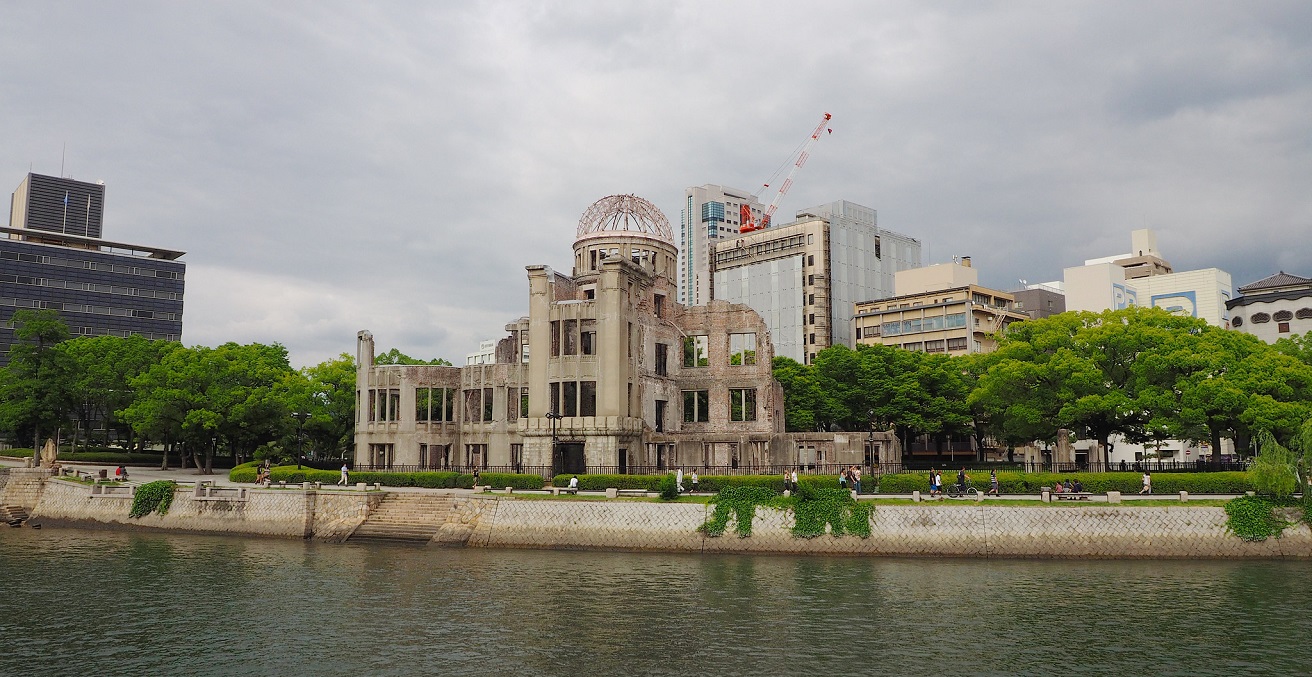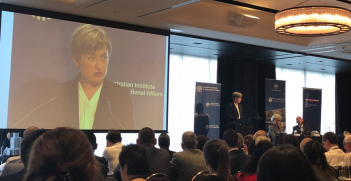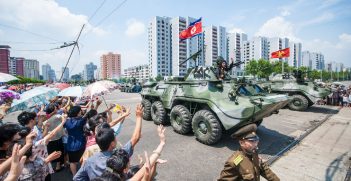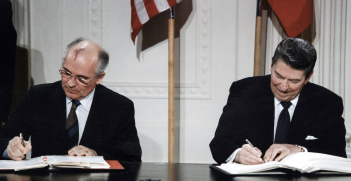Hiroshima and Nagasaki Remembered: Why the Asia-Pacific Must Stand Up for the Nuclear Non-Proliferation Treaty

75 years after the dropping of atomic bombs on Hiroshima and Nagasaki, the Asia-Pacific is again the epicentre of global nuclear threats. COVID-19 has delayed the scheduled NPT Review Conference, offering a glimmer of hope for a more productive outcome.
2020 marks the 75th anniversary of the first, and for now, only uses of nuclear weapons in war. The anniversary invites renewed contemplation of the roles and risks of nuclear weapons. 2020 also marks the 50th anniversary of the entry into force of the Treaty on the Non-Proliferation of Nuclear Weapons, better known as the Non-Proliferation Treaty or NPT. The almost universally supported legal instrument is responsible for stopping the spread of nuclear weapons to perhaps dozens of countries and offers a path to their total elimination.
In these days of understandable preoccupation with the COVID-19 pandemic, it is necessary to remind ourselves that existing stocks of nuclear weapons can destroy life on this planet many times over. The International Commission on Nuclear Non-proliferation and Disarmament concluded that the avoidance of nuclear war had been more a matter of luck than good policy management.
Containing nuclear threats
Scientists who developed nuclear weapons were amongst the first to alert the world to the dangers of nuclear arms. One such warning was the Bulletin of Atomic Scientists, which is also marking its 75th anniversary. In the 1950’s, several plans were advanced by the Soviet Union and the United States to limit nuclear threats, which lead to the establishment in 1956 of the Nobel Peace Prize-winning International Atomic Energy Agency (IAEA). IAEA inspections provide assurance that most nuclear activities around the world are conducted only for peaceful purposes. But the IAEA was and is denied access to nuclear materials that countries use in military programs.
In the 1960’s, the US and the Soviet Union led negotiations that banned nuclear tests in the atmosphere and the placement of nuclear weapons in space. With broad international support, they also negotiated a the NPT to contain the spread of nuclear weapons, with a commitment to work for nuclear disarmament. The NPT opened for signature in 1968 and entered into force in 1970.
Asia-Pacific and the NPT
While the early focus of the proponents of the NPT was the nuclear-capable countries of Europe, Asia-Pacific was also a beneficiary. The NPT helped provide a security and commercial framework for developed and developing industrial states in the region, such as Japan, South Korea, Australia, and Indonesia, to access the benefits of peaceful nuclear activity while foregoing nuclear weapons.
Asia-Pacific uptake of the NPT reflected the region’s security and economic complexity. The first countries to join in 1972 were Thailand, the Philippines, and Cambodia, countries benefitting from security assurances in the Manila Treaty, and those with limited nuclear infrastructures. A change of government and policy allowed Australia to join in 1973. Others under US security protection and with ambitious nuclear electricity plans followed soon after, with South Korea joining in 1975 and Japan in 1976. Indonesia’s ratification in 1979 left only North Korea and China as important players in East Asia outside the NPT. North Korea’s nuclear activities remain a serious challenge to the NPT norm and to security in the region. On the other hand, China’s eventual adherence to the NPT in 1992 enormously strengthened the NPT’s global authority.
In South Asia, India eyed China’s NPT nuclear weapon state status, and Pakistan sought to match or exceed India’s capabilities, given its perceived weakness in conventional forces. While Bangladesh and Sri Lanka joined the NPT, global efforts failed to deter both India and Pakistan from demonstrating their nuclear weapon capabilities in 1988.
The NPT under pressure
To date 191 countries have joined the NPT. Its contributions to global security are broadly acknowledged. But fifty years on, it has failed to deliver nuclear disarmament and to find answers to the weapons of mass destruction (WMD) threats in the Middle East and elsewhere. Jettisoning of the Anti-Ballistic Missile, Intermediate-range Nuclear Forces, and the Open Skies treaties and the absence of any new initiatives from the P-5 have fuelled resentment.
NPT members were scheduled to meet this May in New York for the tenth five-yearly NPT Review Conference. The conferences are cumbersome and highly political, but they keep a focus on nuclear issues. The outcomes have sometimes been an agreed document, but more often than not an agreement is not possible and the process is deemed a “failure.” However, the key question is whether a critical mass remains convinced the NPT continues to serve their interests. To date, that resoundingly remains the case.
The May review conference has been postponed, possibly to later next year. The delay provides an opportunity for some improvement in the international environment. The COVID-19 crisis may serve as a reminder that global threats demand global solutions. A change of administration in Washington might restore US leadership in the management of global nuclear risks. The New START Treaty might be extended. Perhaps the P5 can be persuaded to engage on expanded “no first use” commitments.
What can Asia-Pacific do?
The nuclear age started in Asia, but the focus of concern quickly shifted to the Cold War with the fault line in central Europe. In the post-Cold War nuclear age the epicentre of global nuclear threats has returned to Asia-Pacificwith six nuclear actors on fault lines that run through the Korean peninsula, the East and South China Seas, across the Himalayas and the Karakorum to the Punjab Plain, forming a complex matrix of escalating nuclear tensions.
The Asia-Pacific, therefore, has vital interest in strengthening the non-proliferation norm and containing and ultimately eliminating nuclear threats. To this end, it has an interest in avoiding politicisation of the NPT and in extending political, financial, and technical support to the IAEA and its safeguards inspection system. North Korea’s nuclear challenge remains the most important regional proliferation issue. The region needs to be ready to act collectively to support a solution.
The region should also be looking at confidence building measures to reduce risks. Basic mechanisms have been employed between Pakistan and India (“hot-lines”) and India and China (proscription on the use of firearms on the Line of Control), but there is scope for more far-reaching tools. The ASEAN Regional Forum has been a forum for discussion, but nothing more. The East Asia Summit needs to provide leadership. The experience of the Organisation for Security and Co-operation in Europe provides some lessons.
The nuclear armed states have special responsibilities and must be encouraged to establish mechanisms for managing dangers inherent in their cross-cutting strategic objectives and practices. States under the US’s nuclear umbrella like Japan, South Korea, and Australia too have special responsibilities. The ASEAN states should use their good non-proliferation credentials to drive support for the NPT.
India and Pakistan benefit from the NPT but prefer to denigrate its contribution. Both are seeking to establish their nuclear non-proliferation credentials for membership in the Nuclear Suppliers Group. Their cases would be strengthened by an unequivocal commitment to act as if they were party to the NPT (which France did before it joined in 1992).
Asia-Pacific leaders need reminding of the ongoing existential threat posed by nuclear risks. In the short term, they must take the opportunity offered by the delayed convening of the NPT Review Conference to create momentum on nuclear risk reduction. The nuclear age commenced in Asia-Pacific. The witness of the “Hibakusha” should inspire the region to offer a lead now that others are failing.
John Tilemann is a Senior Fellow at Asia-Pacific Leadership Network on Nuclear Non-Proliferation and Disarmament. He is a former career diplomat and was chief of staff to IAEA directors-general Hans Blix and Mohamed ElBaradei.
This article is published under a Creative Commons Licence and may be republished with attribution.





